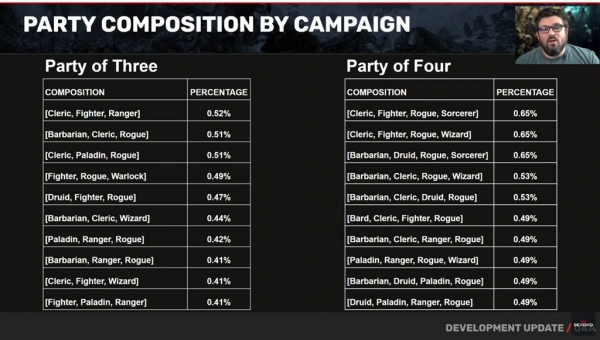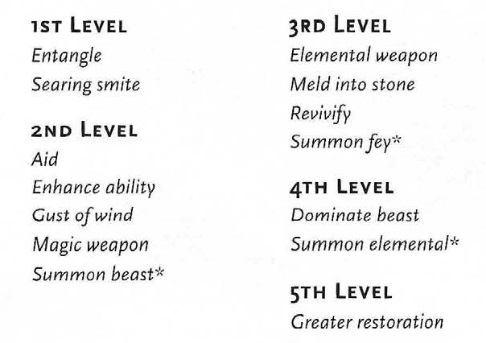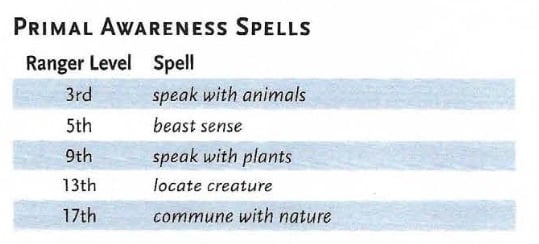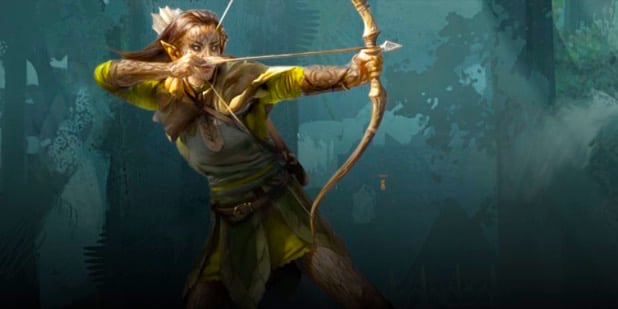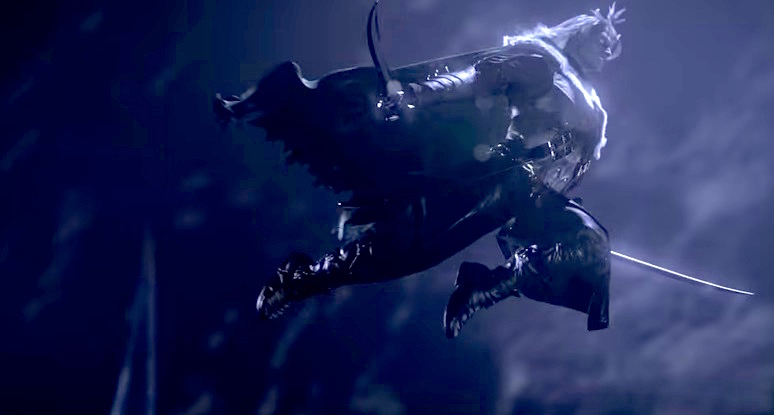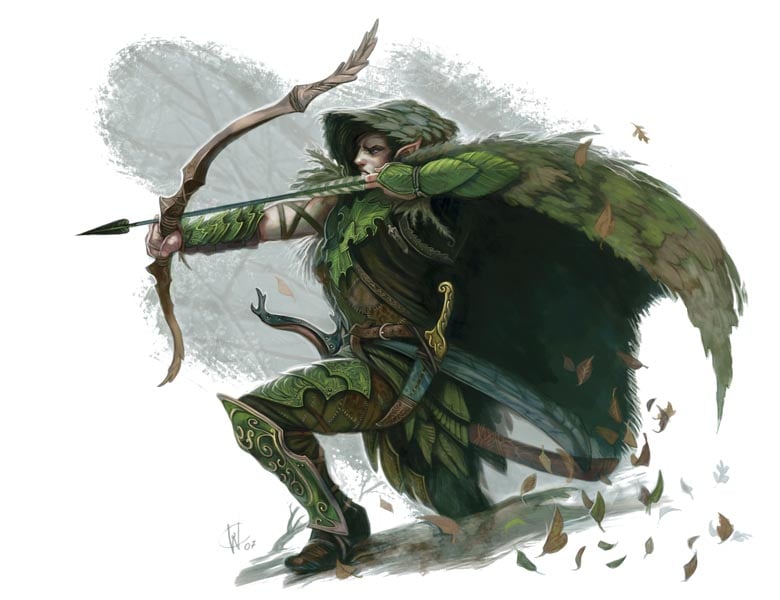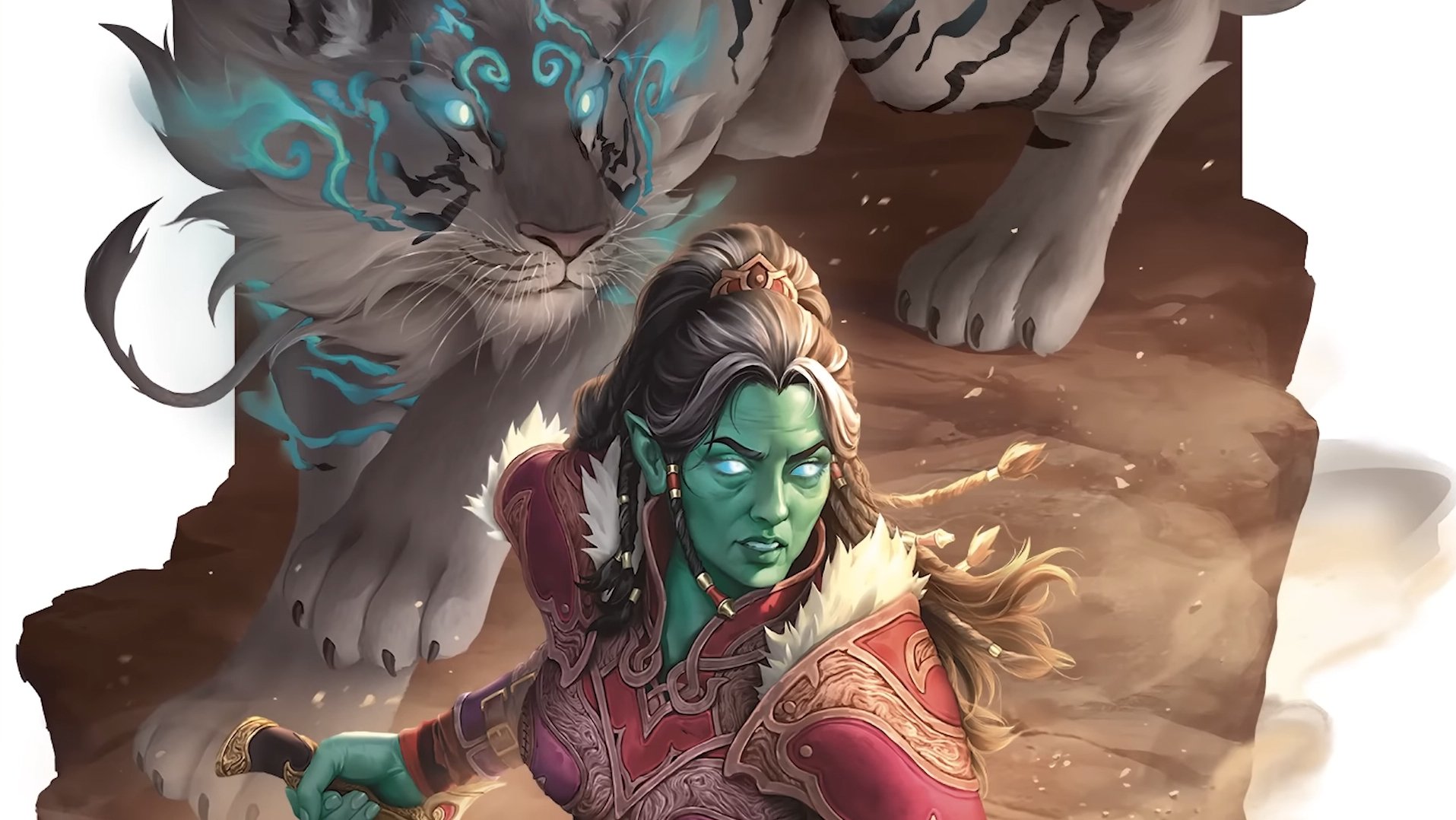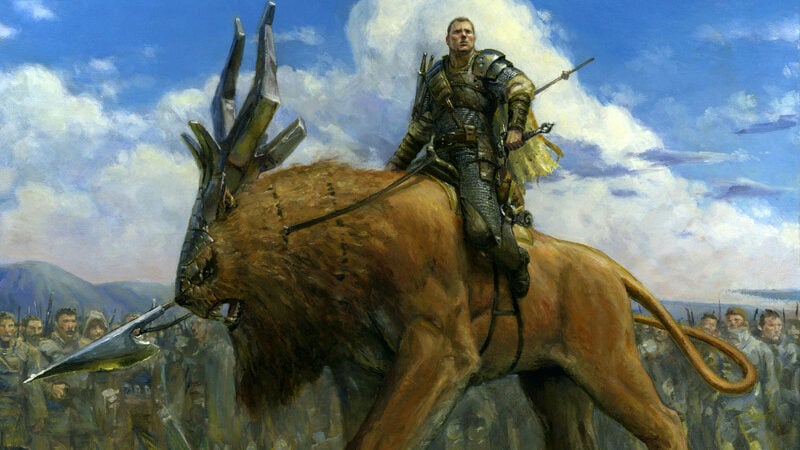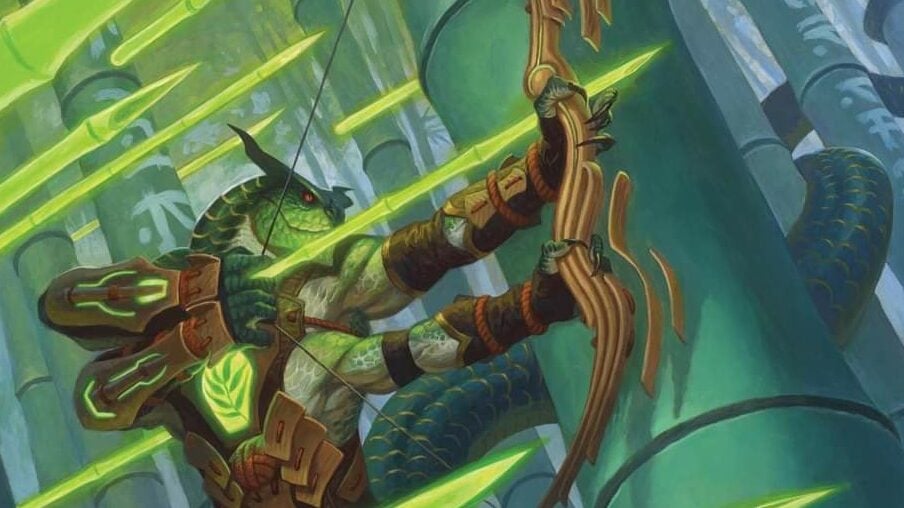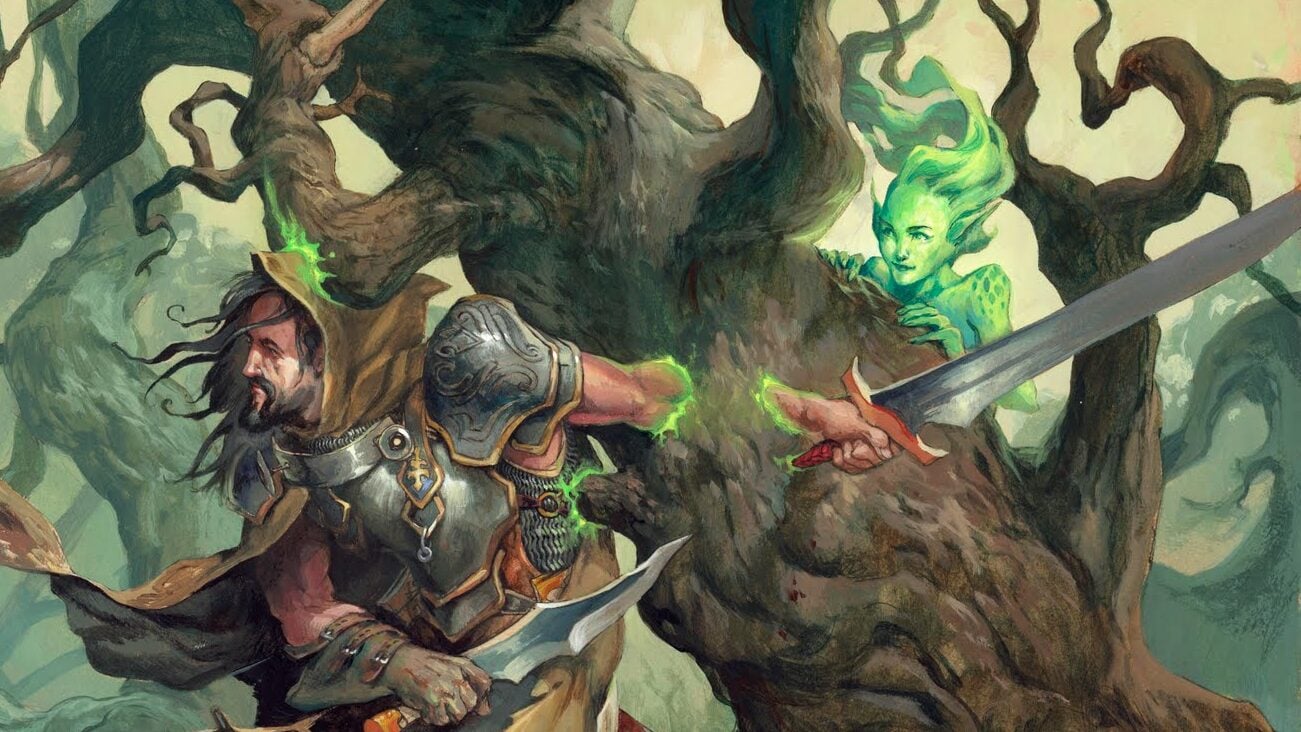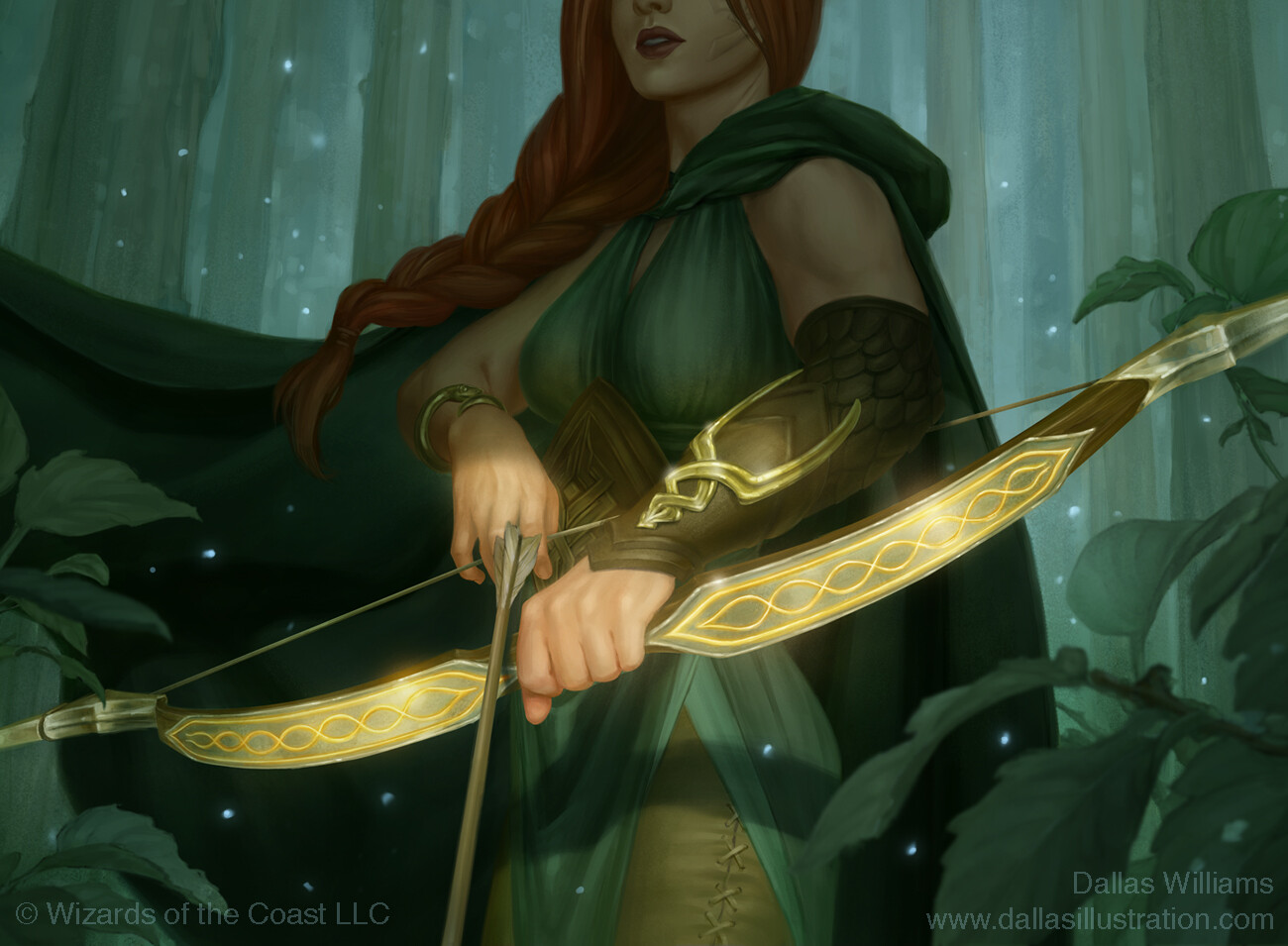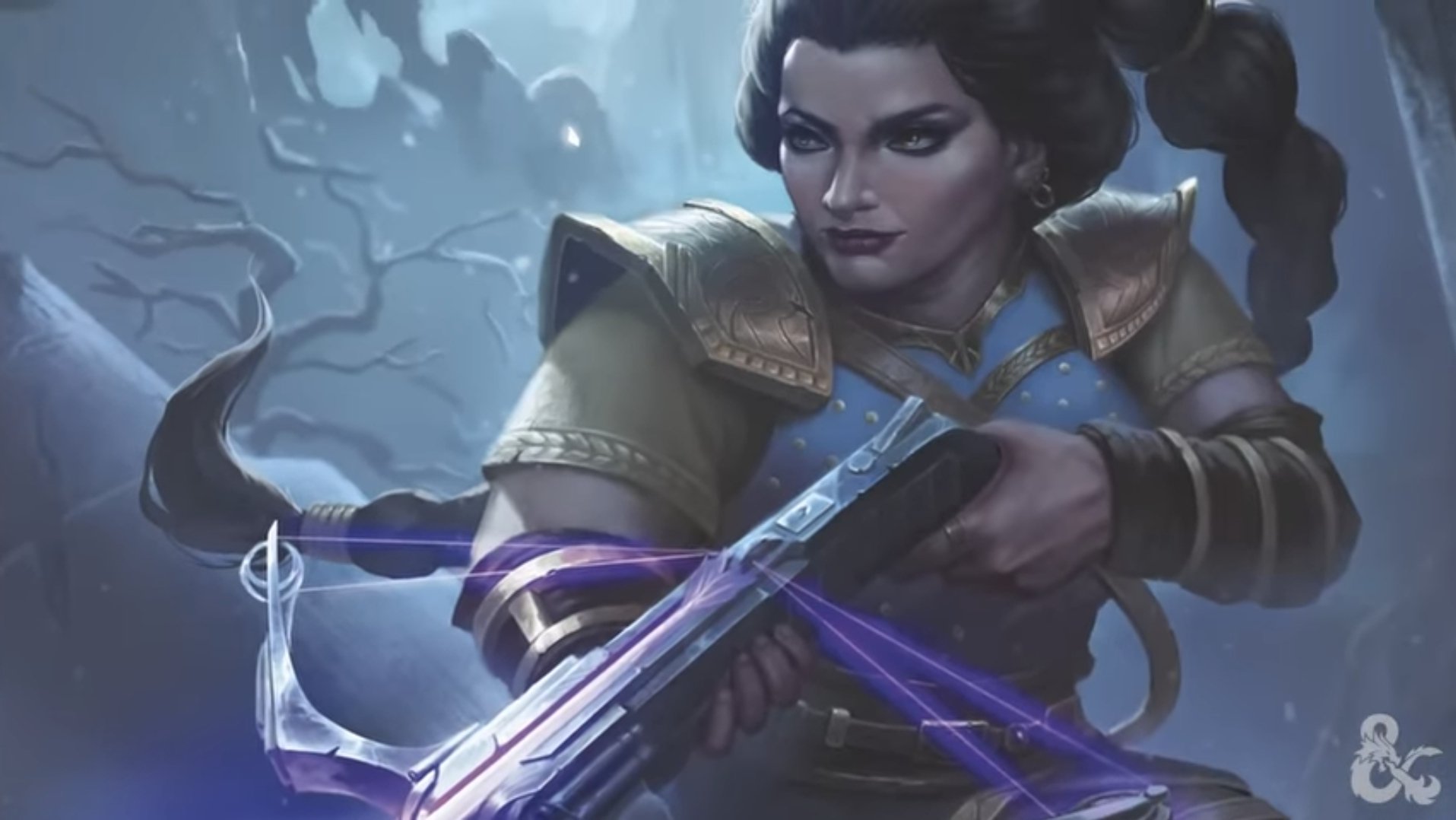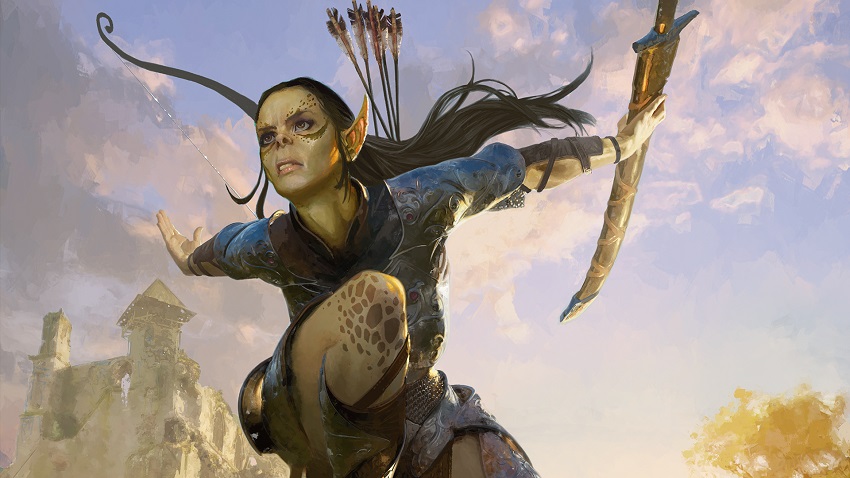D&D 5.5e Guide – How to Play a Ranger
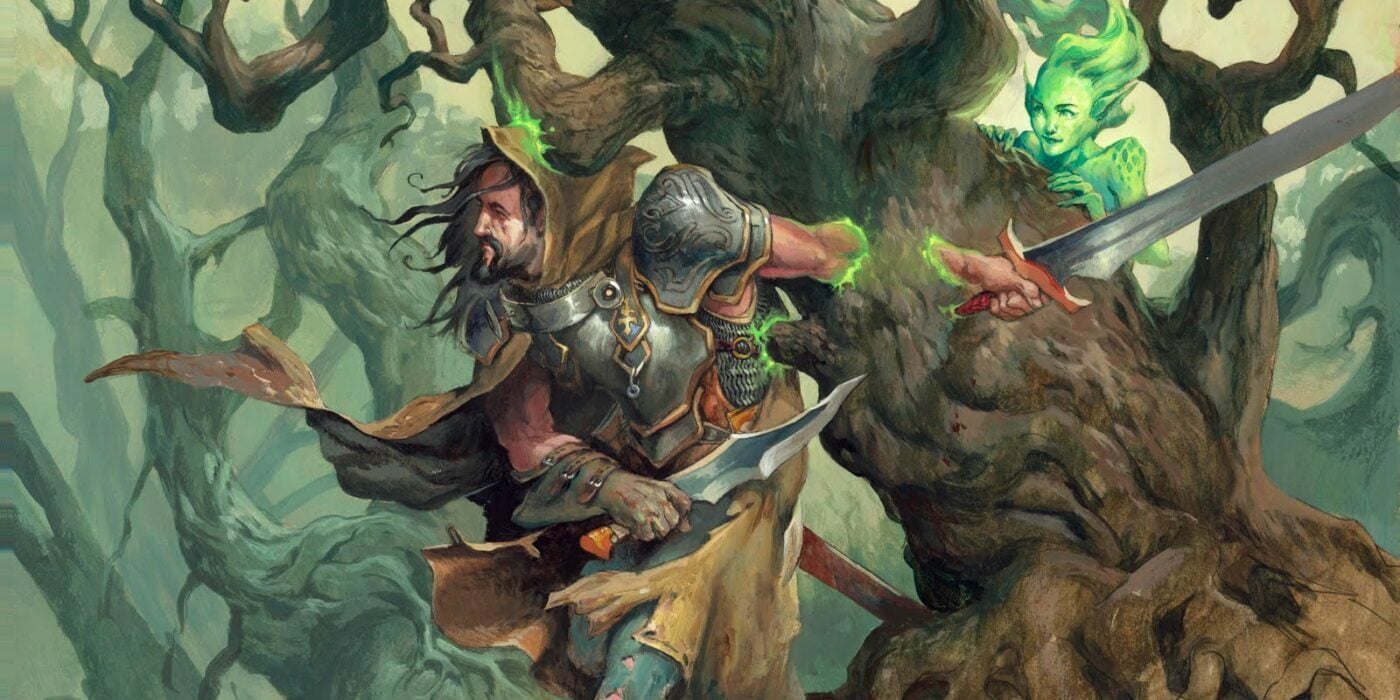
Warriors of the wilderness, Rangers in 5E can be a fun class to play. Here’s a handy guide to getting started with running a ranger in D&D.
Rangers in 5E can be an essential part of any D&D party. With their blend of martial prowess and Druidic magic, they can hold the line on their own or provide much-needed support for the party. Given the right focus, they can take down powerful foes, and when you’re out of combat, they’ve got the skills to keep your party fed and safe and make sure everyone gets where they’re going. Perhaps that’s why they’re part of the trilogy of classes that appears most often in parties of any size: Fighter, Cleric, and Ranger.
Basic Ranger Builds
The best part about a Ranger in 5E is how versatile they can be. Their spells can be a boon to a party, and their skills can suit them to almost any role. But they’re also one of the more maligned classes in D&D.
A big part of this is because Rangers have a lot of competition for their actions in combat and their spells altogether. Fortunately, Tasha’s Cauldron of Everything has some major quality-of-life improvements for players. If you’re considering playing a Ranger, ask your DM about the options included in the book.
Features
Deft Explorer which replaces Natural Explorer–this takes rangers away from having a limited selection of “favored terrains” and instead gives you abilities at 1st, 6th, and 10th level that suit you toward exploring in the wilderness:
- 1st level: you gain a double proficiency bonus with one skill, as well as learning two additional languages
- 6th level: your walking speed increases by 5, and you gain a climbing and swimming speed equal to your walking speed
- 10th level: you can give yourself 1d8 + your Wisdom modifier extra temporary hit points a few times per day (and you lose exhaustion whenever you complete a short rest).
That’s one of the biggest features to replace, though you might also consider swapping out Favored Enemy for Favored Foe, which lets you mark a target to deal an extra 1d4 (increasing later to 1d6 and 1d8). However, this does inhibit your ability to concentrate on a spell–which is one of the eternal struggles for rangers.
You should absolutely ask your DM if you can use the Additional Ranger Spells feature because there’s no reason those spells shouldn’t be on their list already.
And we’re just getting started. That’s before looking at the new fighting style options for rangers, like Blind Fighting, Druidic Warrior, Thrown Weapon Fighting, or the new Primal Awareness which gives you additional spells:
…and you can cast each of those spells once per long rest without expending a spell slot. And then later you can replace Hide in Plain Sight with Nature’s Veil which lets you become invisible as a bonus action.
Nature or Nurture?
That’s already a lot to take into account, but it highlights how flexible Rangers can be in 5E. The best way to get started with them is to figure out what you want to be doing in the dungeon and in the world. You can make a ranger who’s more of a warrior by taking the Druidic Fighting Style and an archetype like Swarmkeeper. Or you can make a master archer, you can excel at fighting a single powerful opponent, you can use your magic to lock down foes. There’s no end of possibilities, but the important thing is to know what you’re going for and focus.
A lot of that comes down to knowing what you’re using your spells on. Like paladins, rangers have a limited number of spell slots, but they can use them to great effect. It’s just a matter of knowing what you can do. The other big part of figuring out your playstyle comes from your archetype, so let’s look at those.
Ranger 5E Archetypes
Beast Master Tasha’s Cauldron of Everything, gave these rangers a much-needed overhaul. This is a class that’s all about having a special companion. Something that you can call forth when you finish a long rest. They will act independently, and you can direct them as a bonus action to fight on your behalf. Or you can give up some of your own attacks to let the beast attack as well. So you can theoretically do most, if not all, of your fighting through your magic beast.
They’ll level up along with you and give you an extra presence wherever you need it on the battlefield. At higher levels, you’ll be able to buff and make multiple attacks alongside them. This gives you loads of attacks on your turn.
Gloom Stalkers are one of the most popular Ranger subclasses, especially if you want to play the Stealth Archer from Elder Scrolls. They focus heavily on fear and darkness, even disappearing entirely when in darkness and facing creatures with Darkvision. Mixing a little Rogue in with your Ranger, these shadowed sentinels excel at stealthy skirmishing. If you want to be able to sneak anywhere, any time this is the subclass for you. Plus, their ambush ability makes them deadly on the first turn, potentially doing 47 damage with a longbow and THEN getting their standard attacks.
You might also play a Fey Wanderer and gain several charm abilities related to the Feywild. If you want to play a more magical ranger, this is the way to go. You can use your abilities to make people afraid. Or you can summon fey creatures and deal extra psychic damage with your attacks. This class has a lot of ways to cast spells without expending a spell slot. So if you like that, give Fey Wanderer a try.
Horizon Walker Rangers, on the other hand, are much more about having the right tool for the job. You get a bonus spell list that focuses on mobility. It includes one of the better mobility features out there. Nothing keeps Horizon Walkers from getting where they want to. They can teleport and hasten themselves. Plus, one of their signature moves is the ability to teleport from spot to spot while attacking. It’s a really cool mechanic, both flavorful and useful. These are the “defender” Rangers in 5E, the ones keeping the world safe from extraplanar threats, and are a lot of fun narratively.
Hunter Rangers are probably tied with Gloom Stalker for most common, just for ease of use. They are the classic ranger, re-imagined in 5th Edition. Their abilities are basically an extension of the 3.x Ranger ideal. You can choose between fighting one big guy, or lots of little ones, or defending yourself at all odds. Then you just level up that ability as you go. Very straightforward, but still powerful. You’ll never be hurting for class feature choices with this one.
Monster Slayer Rangers are like the Hunter but to the extreme. Hunters might focus on taking out enemies, but Monster Slayers focus on killing *monsters*. This means you’ll be shutting down enemy abilities. You’ll also be interfering with spellcasting, especially against monsters that try to escape. If you want to punch above your weight where the supernatural is concerned, this is the archetype for you.
Finally, Swarmkeeper Rangers are a weird mix of magical damage (in the form of a swarm of intangible nature spirits that look like what you decide they do), and they let you do all sorts of extra things in combat. This is probably the best way to go if you want to make a gish ranger. That is a ranger who primarily uses magic as well as melee attacks. Take the Druidic Warrior fighting style along with the Shillelagh cantrip. That way, you can give yourself a spell that you can cast and fight with.
D&D 5.5E and the Revamped Ranger
Of course, all the advice above changes pretty dramatically if you’re playing with the newest D&D rules. Rangers got a sizable overhaul in the new edition, giving them new ways to play. Sure, the archetypes are still there. Gloom Stalker and Fey Wanderer Rangers are practically the same as they ever were. But the Ranger as a whole gets a refocus.
One of the big new things to keep in mind is how much more magically adept they are. It’s not that they have more spells than ever before or anything—although they do start casting at level 1 now. In fact, the Ranger at first level is a powerful suite of features. Starting with a revamped Favored Enemy that means you always have Hunter’s Mark prepared.
Hunter’s Mark
Hunter’s Mark is a core part of the Ranger playstyle now. But it’s actually not as dominant over other things as you might think. It’s nice that Rangers get to cast it for free multiple times per day, starting at two times per day at 1st level, rising to three at 5th level, four at 9th level, five at 13th level, and six at 17th level. Honestly by the time you hit 5th level that’s more than enough to never have to worry about casting it ever again.
And Hunter’s Mark plays handily with the revamped subclasses, as well as getting improved features at higher levels. Again, it’s a part of the Ranger’s identity, but with the release of the full Player’s Handbook, there’s a lot more to love.
Ranger Weapon Masteries
The other big core change to the way Ranger’s play is in the Weapon Masteries they have access to. Most (but not all) weapon using classes can gain special properties when they use certain weapons. And Rangers are one of them. They can pick two Weapon Mastery options, choosing from any Simple or Martial weapons.
The types of weapon masteries you pick can change up your playstyle. A Ranger wielding a Warhammer, for instance, might push foes around the battlefield. While one with weapons that have the Nick properties might drown their enemies in a deluge of attacks. This can play well with the Beastmaster Ranger whose beast companion makes attacks in place of yours, leaving you much more powerful strikes without the need to take the complementary Fighting Style.
How to Play a Ranger? Versatility
In 5.5E, Rangers are all about flexibility. You can see this in their higher level features, starting at 2nd level. That’s when they gain expertise in any skill they’re proficient with. Or in the Fighting Style option, which can let you lean hardcore into playing a magical Ranger. That is, someone who spends much of their time casting spells instead of making attacks.
And you might want to consider that since Ranger spells are better than ever. In previous editions, they’ve had to contend with a more limited selection of “powerful” options for their spells. But spells in 5.5E got an overhaul altogether. Many options that were just okay are now much more potent.
Standout Spells for Rangers in 5.5E
- Entangle—one of the largest low level AoEs
- Ensnaring Strike – a Bonus Action strike that can shut down targets who don’t have Athletics
- Aid – give your whole party more hit points
- Spike Growth – one of the deadliest low level AoE spells for a party that can move targets around
- Summon Beast – Add an extra ally for an hour
- Conjure Animals – A pack of spirit animals that can damage your enemies more than once per round
And that’s just a small taste of the options they have to play with. There are more to be discovered. To say nothing of using Shillelagh as your main weapon on a club, paired with a light weapon with the Nick Property to make multiple magic attacks that scale up with damage.
Rangers have even more options baked into their base class, though. At highe rlevels, they can turn invisible as a Bonus Action. They can heal themselves and decrease Exhaustion, one of the few classes that can do this reliably, they even start to move faster. Rangers are truly a jack of all trades type class in the new edition. That is to say, whatever you want to play, there’s a way to play it.
Subclasses in 5.5E: Built Different
As mentioned, each of the subclasses plays a little differently. While Gloomstalker and Fey Wanderer are mostly the same, they’re both a little less swingy. Gloomstalkers especially lose some of that first round punchiness in exchange for more sustainability.
But what about the other two? One of the most changed is the Beast Master Ranger. Beastmaster is now a class that acts in concert with its beastial spirit. Like in Tasha’s Cauldron, your Beast can now be commanded as a Bonus Action. So you can use a Bonus Action to make your beast strike, and you can ALSO sacrifice one of your attacks, allowing you to let your beast strike—potentially giving you four attacks (if you’re dual-wielding) while still at only 5th level.
At higher levels the Beast can do more with the same resources. A 7th level your Beast can strike as an action and can Dodge, Disengage, or Help as part of the same action. It gives you so much more flexibility. And it hits even harder at higher levels, gaining its own multiple attacks. At 11th level, you could potentially get four strikes out of your beast on your turn, for the cost of your bonus action and one of the attacks you’d be making. Potent stuff that makes them deadly and versatile.
The Hunter Ranger, on the other hand, is no longer all about delivering damage to one target. They still do that, but they’re much better at defending the party as well. Their 7th level feature gives them spectacular defense against creatures with multiattack (which is most of them past CR 2 or 3). And their Hunter’s Marks get better and better with every level.
Happy adventuring!

